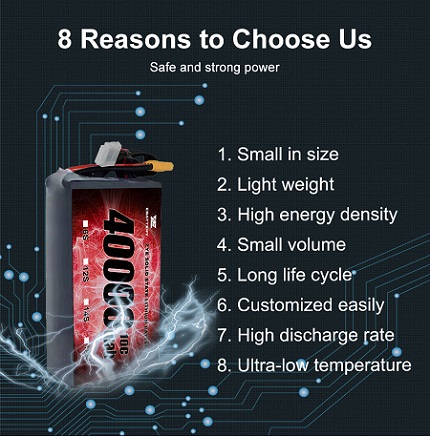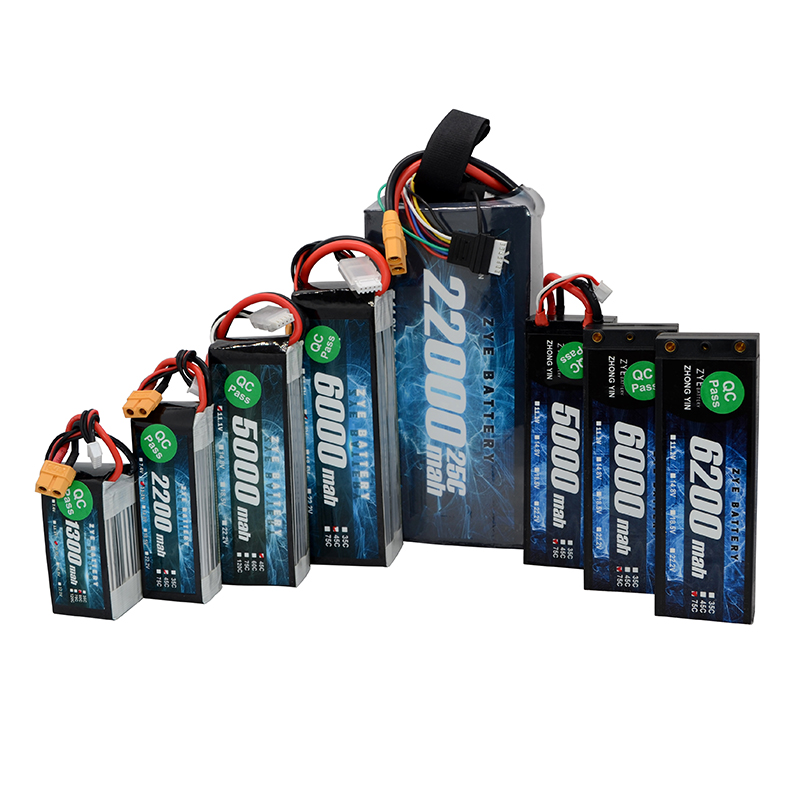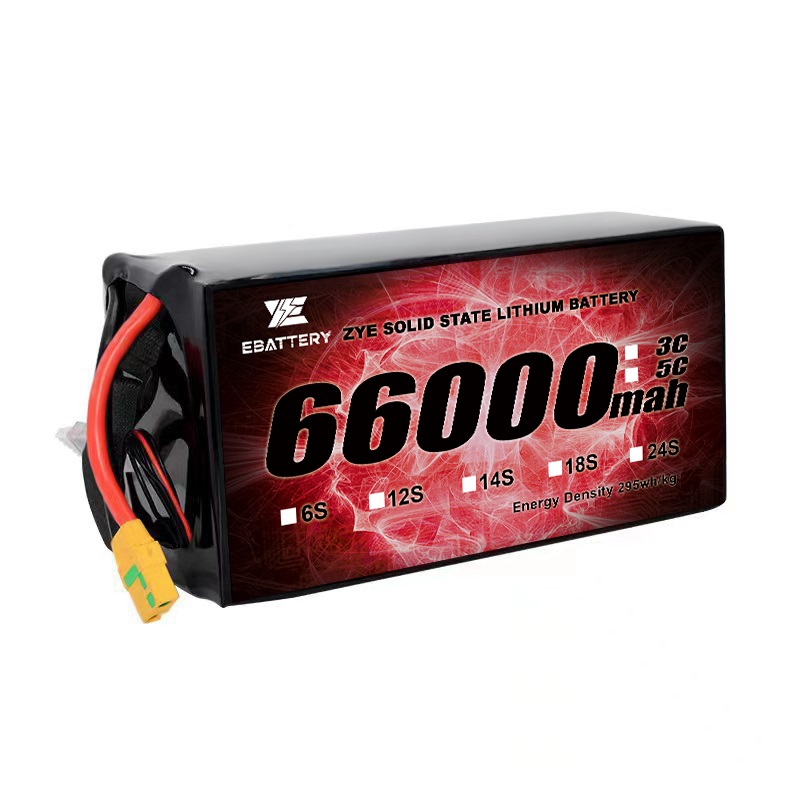How Can You Balance Power and Flight Time in Custom Drone Builds?
Building a custom drone requires careful consideration of various factors, with power and flight time being two critical aspects that often seem at odds. Striking the right balance between these elements, including selecting the right drone battery, is crucial for creating a high-performance drone that meets your specific needs. In this comprehensive guide, we'll explore strategies to optimize your custom drone build for both power and endurance.
How to Calculate Optimal Capacity for Custom Drones?
Determining the ideal battery capacity for your custom drone is a crucial step in achieving the perfect balance between power and flight time. Let's dive into the calculations and considerations that will help you make informed decisions.
Understanding Battery Capacity and Its Impact
Battery capacity, measured in milliamp-hours (mAh), directly affects your drone's flight time. A higher capacity drone battery can provide longer flight times, but it also adds weight, which can impact performance. To find the sweet spot, you need to consider your drone's total weight, power requirements, and intended use.
The Power-to-Weight Ratio Calculation
To calculate the optimal capacity, start by determining your drone's power-to-weight ratio. This ratio helps you understand how much power your drone needs to stay airborne efficiently. Here's a simple formula:
Power-to-Weight Ratio = Total Thrust / Total Weight
Aim for a power-to-weight ratio of at least 2:1 for stable flight and maneuverability. Once you have this ratio, you can estimate the power draw and calculate the battery capacity needed for your desired flight time.
Estimating Power Draw and Flight Time
To estimate your drone's power draw, use this formula:
Power Draw (Watts) = Voltage x Current
With the power draw calculated, you can estimate flight time using this equation:
Flight Time (minutes) = (Battery Capacity in mAh x Battery Voltage) / (Power Draw x 60)
Remember to factor in a safety margin, as you should never completely drain your battery during flight.

Which Battery Type Offers the Best Balance?
Choosing the right drone battery type is crucial for achieving the optimal balance between power and flight time in your custom drone build. Let's explore the options and their characteristics.
Lithium Polymer (LiPo) Batteries: The Popular Choice
LiPo batteries are the most common choice for custom drone builds due to their high energy density and ability to deliver high discharge rates. They offer a good balance of weight, capacity, and power output, making them suitable for a wide range of drone applications.
Key advantages of LiPo batteries:
- High energy density
- Lightweight
- Flexible form factors
- High discharge rates
However, LiPo batteries require careful handling and proper charging to ensure safety and longevity.
Lithium-Ion (Li-Ion) Batteries: The Endurance Option
Li-Ion batteries offer higher energy density compared to LiPo batteries, making them an excellent choice for drones that prioritize flight time over raw power. They're often used in long-range or endurance-focused drone builds.
Advantages of Li-Ion batteries:
- Higher energy density than LiPo
- Longer cycle life
- More stable and safer than LiPo
The trade-off is that Li-Ion batteries generally have lower discharge rates, which may limit their suitability for high-performance applications.
Emerging Technologies: Solid-State Batteries
Solid-state batteries are an emerging technology that promises to revolutionize drone power systems. These batteries use solid electrolytes instead of liquid or polymer electrolytes, offering several potential advantages:
- Higher energy density
- Improved safety
- Faster charging capabilities
- Longer lifespan
While still in development, solid-state batteries could offer the ultimate balance of power and flight time for future drone builds.
How Does Battery Placement Affect Flight Efficiency?
The placement of your drone battery can significantly impact your custom build's flight efficiency, stability, and overall performance. Let's explore the key considerations for optimal battery placement.
Center of Gravity Considerations
Proper battery placement is crucial for maintaining the drone's center of gravity (CoG). Ideally, the CoG should be as close to the geometric center of the drone as possible. This balance ensures stable flight characteristics and efficient power usage.
Tips for optimal CoG placement:
1. Position the battery as close to the drone's center as possible
2. Consider using a battery tray that allows for fine adjustments
3. Balance the weight distribution of other components around the battery
Aerodynamics and Heat Dissipation
Battery placement also affects your drone's aerodynamics and heat dissipation capabilities. A well-placed battery can help reduce drag and improve cooling, both of which contribute to better flight efficiency and battery performance.
Considerations for aerodynamics and cooling:
1. Avoid placing the battery in a way that disrupts airflow
2. Ensure adequate ventilation around the battery to prevent overheating
3. Consider using a battery compartment with built-in cooling features for high-performance builds
Accessibility and Quick-Swap Capabilities
While optimizing for flight efficiency, it's also important to consider practical aspects such as battery accessibility and the ability to quickly swap batteries between flights. A well-designed battery mounting system can significantly improve your drone's usability and reduce downtime.
Features to consider for battery mounting:
1. Easy-access battery compartments
2. Quick-release mechanisms for fast battery swaps
3. Secure mounting to prevent shifts during flight
Balancing Act: Power Distribution and Wiring
The placement of your battery also affects power distribution and wiring complexity. Optimal placement can help minimize wire length, reduce weight, and improve overall system efficiency.
Tips for efficient power distribution:
1. Keep power leads as short as possible to minimize voltage drop
2. Use appropriate gauge wires to handle the current draw
3. Consider using a power distribution board (PDB) for clean and efficient wiring
By carefully considering these factors and finding the right balance, you can significantly improve your custom drone's flight efficiency and overall performance.
Conclusion
Balancing power and flight time in custom drone builds is a complex but rewarding process. By carefully calculating optimal battery capacity, choosing the right battery type, and optimizing battery placement, you can create a drone that meets your specific performance needs while maximizing flight efficiency.
Remember that the perfect balance will depend on your unique requirements and use case. Don't be afraid to experiment with different configurations to find the ideal setup for your custom drone build.
For top-quality drone batteries that offer the perfect balance of power and flight time, look no further than Ebattery. Our cutting-edge battery solutions are designed to meet the demanding needs of custom drone builders. Contact us at cathy@zyepower.com to learn more about how our products can take your drone build to new heights.
References
1. Johnson, A. (2022). Advanced Drone Power Systems: Balancing Performance and Endurance. Journal of Unmanned Aerial Systems, 15(3), 78-92.
2. Smith, R., & Brown, T. (2023). Optimizing Battery Placement in Custom Drone Builds. International Conference on Drone Technology, 456-470.
3. Lee, S., et al. (2021). Comparative Analysis of Battery Technologies for Long-Range Drone Applications. Energy & Environmental Science, 14(8), 4231-4245.
4. Garcia, M. (2023). The Future of Drone Batteries: Solid-State Technology and Beyond. Drone Technology Review, 7(2), 112-126.
5. Wilson, K., & Taylor, J. (2022). Power-to-Weight Ratio Optimization in Custom Drone Designs. Journal of Aerospace Engineering, 35(4), 567-582.
























































